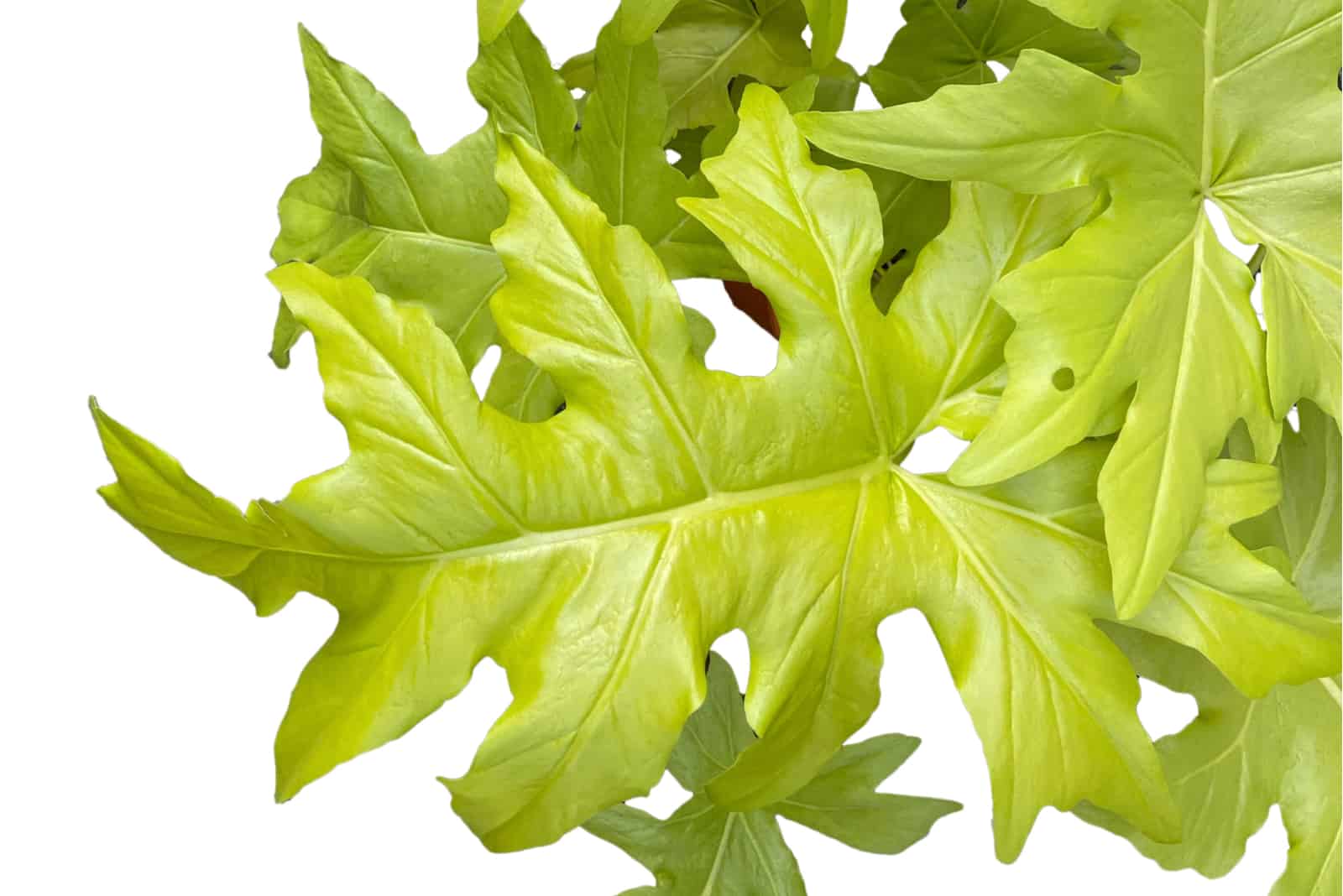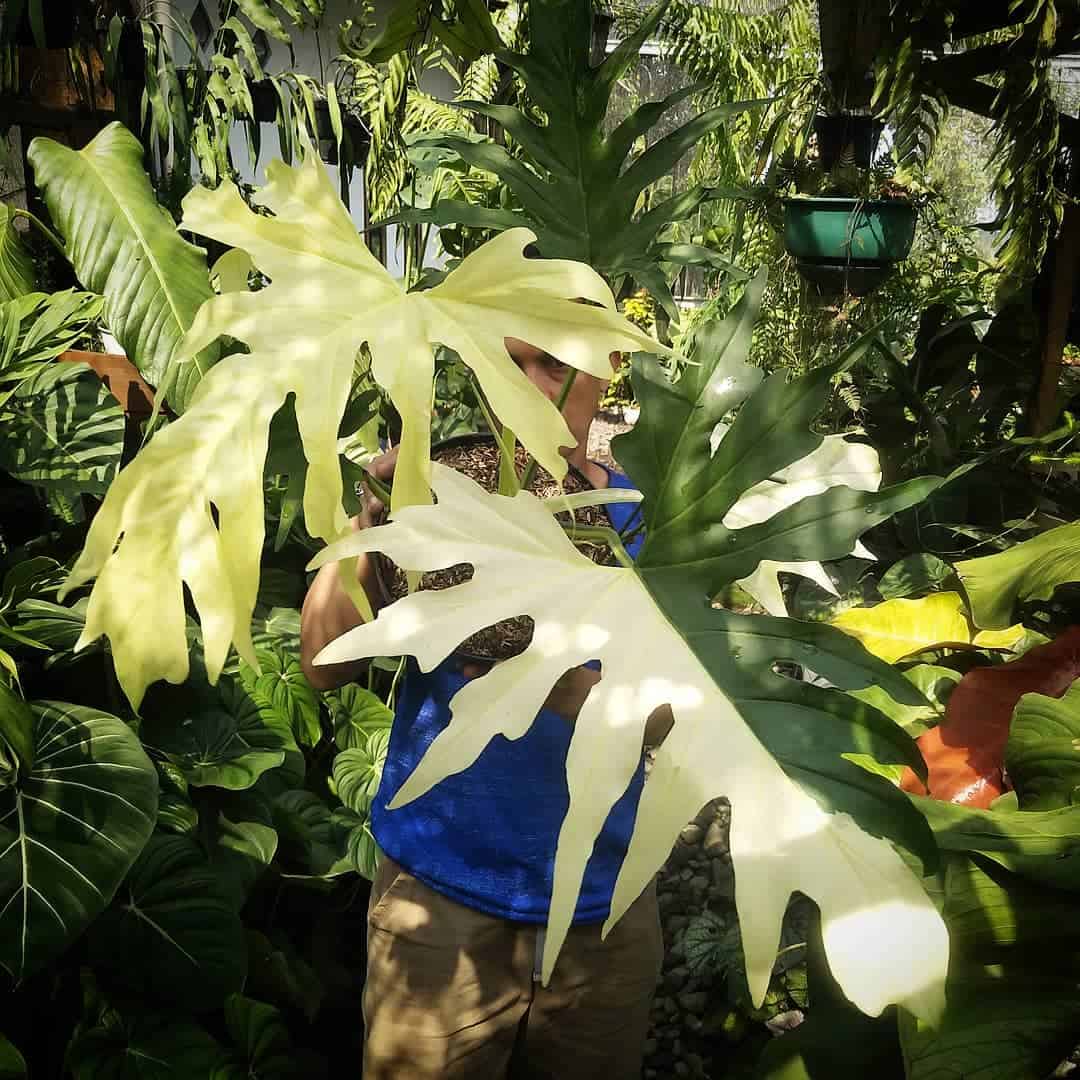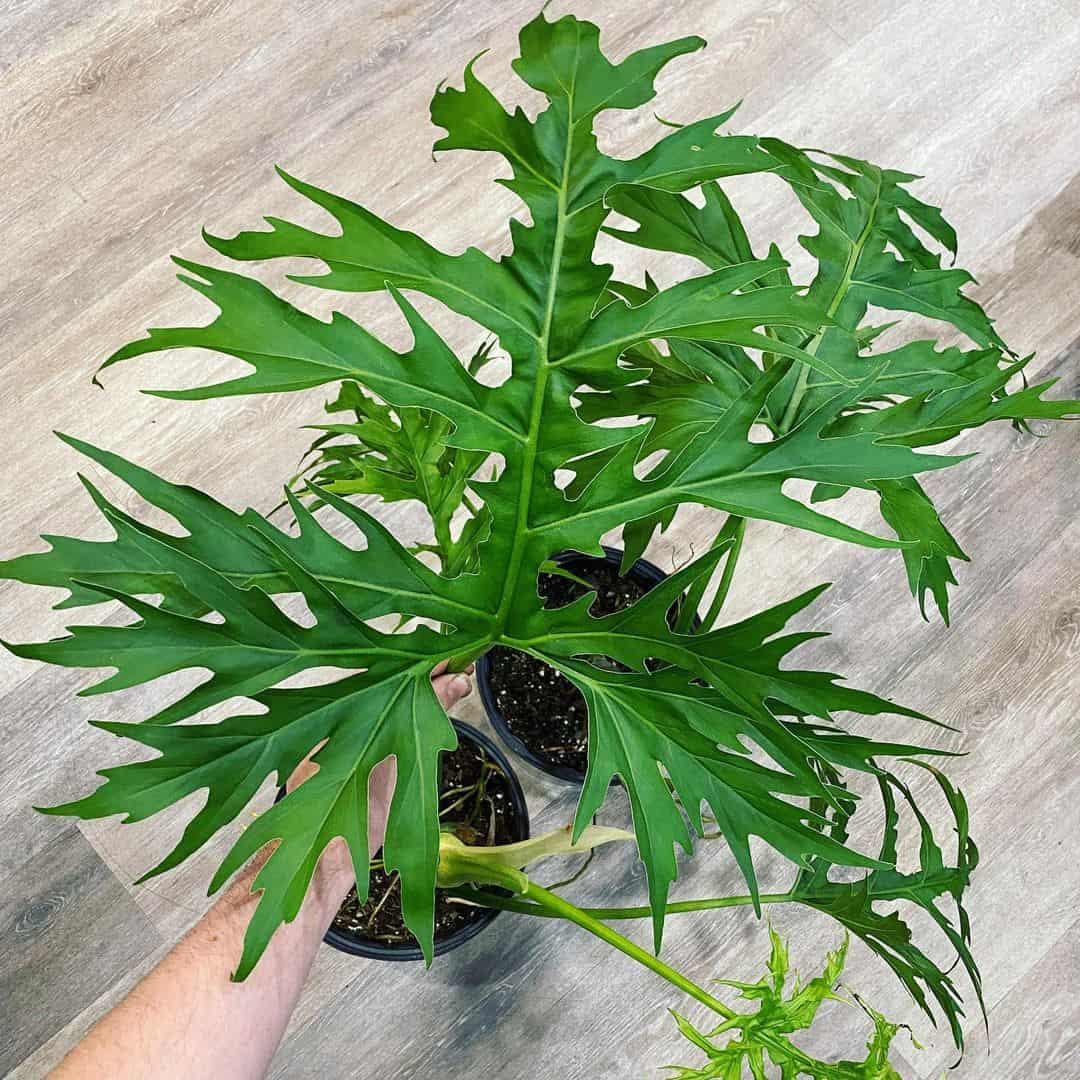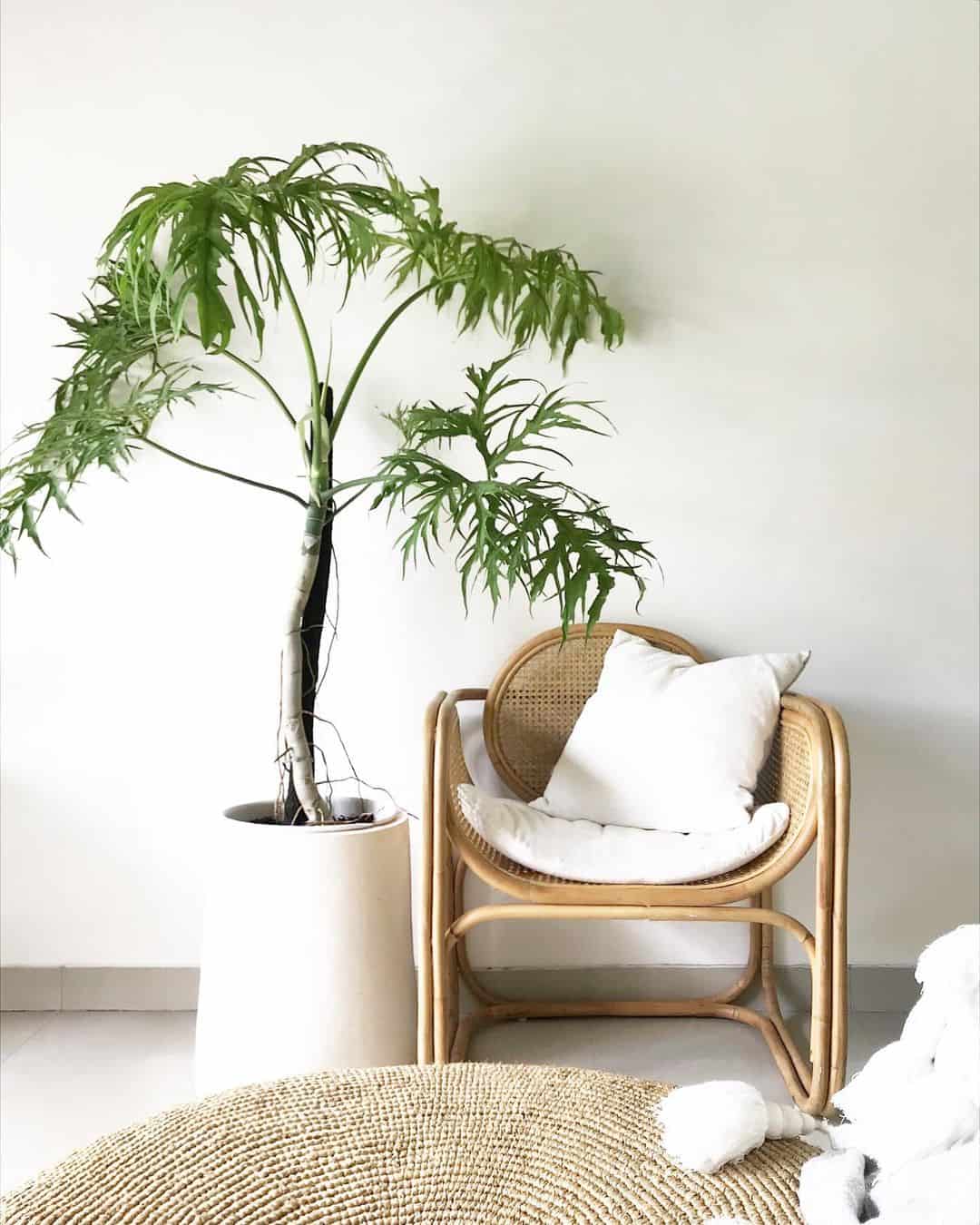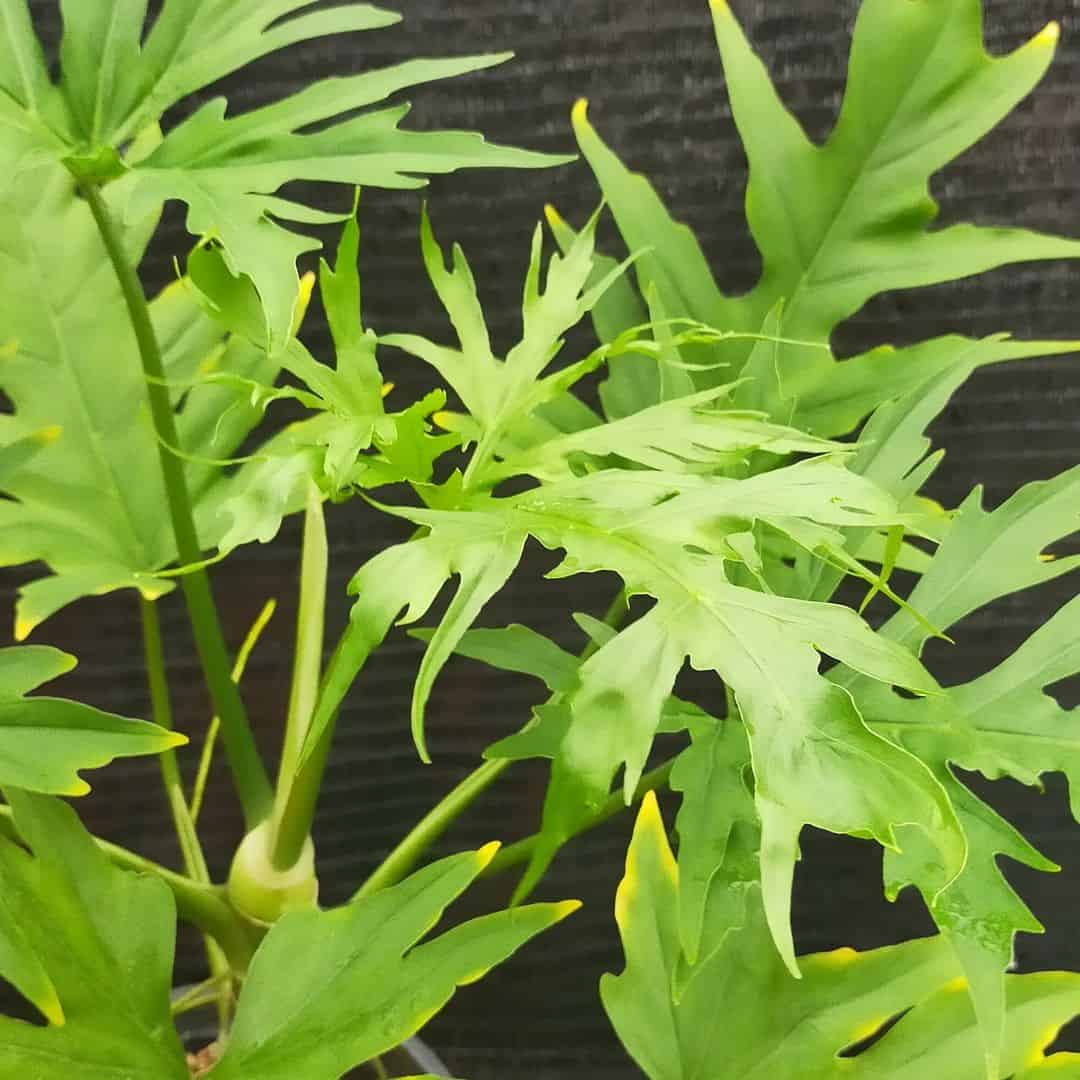Positive Bloom is an Amazon Associate and we earn from qualifying purchases through these links at no extra cost to you.
Let’s get this out of the way nice and early: it takes more effort to pronounce the name of Philodendron Warscewiczii (or Philodendron Warszewiczii (however you want to spell it) than to actually take care of it!
This low maintenance plant is perfect for completing your magical garden, and if you don’t already have one, I highly recommend you go ahead and get one!
This philodendron is perfect for beginner gardeners with busy lifestyles, not just because of its low maintenance, but also because of its beauty.
If you’re not already charmed by this lovely plant reminiscent of The Witcher novels and series, read the rest of this article to find out everything that makes it so special and more!
First, some general information
[table id=8 /]Even though the Philodendron Warscewiczii is toxic, it can still adorn your room in a way that no other plant could (and it would also make it a perfect setting for reading Sapkowski’s awesome novels about Geralt of Rivia).
This article has all the information you’ll need about the history of this amazing plant, as well as loads of tips about how best to care for one of your own and help it grow big and strong.
Philodendron Warscewiczii Aurea Flavum Care
Photo from: @iwan1510satu
The Care guide for a Philodendron Warscewiczii is pretty simple: give it a bit of water and keep it in partial shade, and you’ll be good to go.
However, if you’re a real nitpicker when it comes to plant care like I am, you might want some extra details about how best to take care of this peculiar plant.
Taking care of philodendron plants may be straightforward, but it’s also rewarding, since the care guide for philodendron ‘Lickety Split’ is quite similar, you can grow both these varieties at the same time with almost no effort.
Light
Philodendron Warscewiczii, also known by its common name Snowflake Leaf Philodendron, is a philodendron just like any other when it comes to light requirements.
Place it in some medium to bright indirect sunlight, and it will grow in no time. However, too much direct sunlight will give it sunburn, so be very careful about putting it in direct light.
The light conditions ideal for this indoor plant are quite easy to remember and follow. Placing it near a south or west-facing window is the best option because this will give your philodendron the exact amount of light it needs.
This is because too much light will turn it red or brown and make it wither, but if you give it too little sunlight, its mesmerizing green leaves will start to lose their color.
Water And Humidity
Water requirements for this gorgeous houseplant are fairly easy to remember, although they are a bit more complicated than the sunlight needs.
You need to check if the top level of the soil is completely dry, and you can do this by sticking your finger 2-3 inches (5-7 cm) deep and feeling the soil. If it is dry, then you should water the Philodendron Warscewiczii, but if it isn’t, then you definitely shouldn’t, just come back in a few days to check the soil moisture again.
With aroids and tropical plants such as this philodendron plant, it is best to water them in such a way that the soil is completely wet before draining the excess.
After that, just wait until the topsoil is dry once again and then repeat the process.
There is no need to water it outside of these times because it will lead to excess water, and that leads to the dreaded root rot. This is why it’s so important to avoid overwatering your philodendron.
Humidity Requirements
You may be surprised by this one. You already know that the Philodendron Warscewiczii is a tropical plant, so you might guess that it loves humidity.
But what if I told you that it loves dry environments just as much? And you thought this plant couldn’t get any more appealing!
You don’t have to bother with the pebble tray method, buy a humidifier, or even spray it with water.
You can either put this easily taken care of plant in a dry or 50-70% humid room and it will thrive equally well in both.
After all, the Polish first discovered this plant in a forested area, which can be both dry and humid, but if you want your plant to have ideal conditions, you can always invest in a small humidifier such as the one below.
Temperature
There are no surprises when it comes to the preferred temperature of Philodendron Warscewiczii. This live plant prefers the warmth it would find in its tropical rainforest while staying at your house.
This philodendron cannot stand temperatures lower than 50°F (10°C). Other than that, it has no special requirements, as long as you keep the thermostat somewhere between 60 and 86 °F (15 and 30 °C).
Just a reminder that it definitely doesn’t like sudden temperature changes either (or drafts, for that matter), so be careful about that too.
Soil And Fertilization
Something that I unfortunately learned the hard way, is that well-draining soil is a must-have when it comes to taking care of a philodendron warscewiczii. I underestimated the importance of this, and boy, was that a big mistake!
If you’ve just bought a regular base potting soil mix and are heading towards the checkout, turn around and grab some pumice or perlite instead. This way, you can make your own well-draining soil.
This type of soil will allow enough aeration and provide the roots with much-needed oxygen so that they don’t drown in water, or worse, get infected with root rot.
If you want to create a super-soil, you can always add horticultural charcoal to get rid of all the impurities, and even orchid bark to increase aeration.
How And When to Fertilize
This philodendron has no special needs when it comes to fertilizer. Use any fertilizer designed for tropical plants and you won’t go too far wrong.
Here’s a nice little tip: it’s better to buy fertilizer than to make your own because it is difficult to meet all your plants’ needs with home made.
A general rule is to only fertilize your plants during the growing seasons. Fertilizing a plant during spring and summer days will make it taller and lusher, while fertilization in winter defeats the whole purpose.
The best fertilizers for tropical plants like philodendrons are water-soluble and rich in nutrients and organic content. You should ensure that you don’t give your plant too much fertilizer because it will do more harm than good.
Fertilizer should be dissolved in water and then added in infrequent and small doses, this way your plant can go through an adjustment period.
After that, you can increase the dosage and make fertilization a more regular thing, but be sure not to overdo it because it may lead to fertilizer burn.
(You can easily recognise this by the presence of burnt foliage, but more serious damage is done to the roots, so be really careful.)
Time Of Blooming
This special philodendron blooms in the summer, and if you get lucky, you may get to enjoy its unique, white snowflakes even during the summertime. Just beware of pests and insects because these flowers give off a certain scent that they love.
It’s so lovely to enjoy the feeling of the winter months without the cold during the warmth of the summer! It’s something I really love, and whenever this philodendron surprises me with its white flowers it’s such a treat.
Propagation
Philodendron warscewiczii can be propagated in many ways, you just have to find the right way for you. I find that propagating it with seeds is best left to professionals at nurseries, so I stick to good old stem cutting propagation.
The best time to propagate any plant, and not just philodendrons, is during their growing period, and for philodendron warscewiczii this is in spring.
While the sun is bright and the birds are singing, take a pair of gardening shears and cut off a stem with at least three nodes and some roots.
Place the cutting in a pot with some well-draining soil mix, and press the soil down to help it stand upright.
Please note that for the first few weeks it’s important to keep the soil moist until the new plant is established.
You don’t need any growth hormone because this plant tends to develop its root system very quickly. Just keep it in a bright spot, but remember: no direct sunlight!
Repotting
There’s a few things you should know about repotting this plant. These plants are fast growers, and you will have to repot them more than once regardless of the pot size.
You will know it’s the right time to repot when you pick up the philodendron warscewiczii and see the roots sticking out of the pot.
You will want to make sure that you repot the plant during a growing season (optimal repotting time is spring) and put it into a bigger and new nursery pot.
Again, well-draining soil is your best friend when repotting this philodendron plant. However, you must be careful because it could be difficult to get the actual plant out of its container.
It’s important to give this plant a short period of time to get used to it’s new accommodation, that way you will see the benefits really quickly.
Pruning
Pruning is something you might be afraid of at first, but if done properly it can really make your plant shine.
You can prune it in such a way that the mature plant fits in a certain place you have for it, or you can prune it in order to get rid of any dead or dying leaves (indicated by the change of color from green to yellow, red, and brown).
More About Philodendron Warscewiczii
Photo from: @illexotics
Variegated philodendrons need some company, and the aurea flavum would be a perfect addition to your philodendron bipinnatifidum, monstera, or even alocasia.
Also, philodendron warscewiczii, just like many other members of the family Araceae, accumulates calcium oxalate in its foliage. This makes it toxic to both people and pets, and they may cause skin irritation and respiratory problems. However, if you’re careful you shouldn’t have any problems.
So, don’t miss out on this gorgeous climber just because of a few inconveniences. Every plant has them!
Foliage
Philodendron warscewiczii Aurea Flavum are also called the golden leaf for a reason. It has large, segmented yellow leaves that can make any area look like an oriental temple, and pairing this variety with Lemon Lime philodendron can only intensify the vibrant golden hue.
The leaves of this philodendron can grow to 2-3 inches (5-7 cm) tall and wide, making it a perfect choice for decorating a small reading room.
Common Pests And Diseases
Philodendron warscewiczii experience a few problems with pests and diseases, but these issues can be easily avoided and quickly solved.
Common houseplant pests are no strangers to this philodendron. Mealybugs may look like tiny snowballs, but they are anything but. You should get rid of them as soon as you see them because they are feeding on your plant.
They can be quickly removed with rubbing alcohol, and to stop them coming back, you should use an insecticide that isn’t too harmful to your plant.
Other common pests that appear on philodendron warscewiczii are spider mites and aphids, which look like a small colorful carnival. However, they will destroy your plant given the opportunity, so watch out! Simply spray them with a pesticide to kill them.
Common Diseases
Erwinia Leaf Spot is quite a common disease when it comes to philodendrons. (I guess it loves their leaves as much as we all do.)
It causes pale yellow, water-soaked, or translucent marks on the foliage of philodendron warscewiczii that will spread and turn yellow, orange, or red.
Erwinia is a bacterial infection, and it usually finds its way into a plant via unsterilized shears. So, if you’ve been pruning your indoor plants, be sure to sterilize your gardening scissors to prevent this bacteria from killing the golden leaves.
It develops more quickly in humid environments. If your plant gets the leaf spot, you will immediately want to separate it from your other plants and remove the infected parts so that the disease doesn’t spread.
Another thing you can do is keep the temperature somewhat low, about 70°F (21°C). This will slow down the advancement of the disease in a safe way for your plant.
You can buy remedies and spray medicines like streptomycin, and spray the plant once a week when you first notice the appearance of the disease.
However, be careful with all sprays and always follow the instructions.
Useful Tips And Tricks
Photo from: @craigmilran
Here are some tricks that will help make your philodendron light up the room:
• Nitrogen fertilizer is the best option for philodendron warscewiczii and will make your plant healthier with more beautiful leaves.
• Clean the dust from the leaves with a wet cloth, but be sure to wipe the leaves dry after that.
• Keep the soil moist, but do not let it become clogged with water otherwise you’ll end up with root rot.
• This philodendron is a tropical plant, so it prefers humid environments. If you keep humidity levels medium or a bit higher, your plant will grow shiny, golden leaves that everyone will love.
FAQ
In the following section. you will find the answers to the most frequently asked questions about this plant.
How do you pronounce Philodendron Warscewiczii?
Philodendron Warscewiczii is pronounced vars-she-vich-ee-eye.
It may be difficult at first, but I promise you you’ll get there in time!
Is Philodendron Warscewiczii rare?
Yes, the philodendron warscewiczii is a rare type of philodendron.
It might take an extensive search before you get a hold of this rare philodendron.
What makes this rare plant seem even rarer is its cost. It could run you 100 dollars in some shops, so don’t be surprised if you need to invest a bit more.
It’s such a beautiful plant that it’s worth it though.
What is the rarest philodendron?
The rarest philodendron that can be found in the wild is Philodendron Spiritus Sancti.
True philodendron lovers would do anything to have this one in their collection. What they need to bear in mind is that, as there are only a few of these philodendrons out there, this species of philodendron is very expensive.
Anyone can enjoy these philodendron warscewiczii with a nice cup of tea wherever they end up putting it in their house.
In Conclusion
Photo from: @wikyplants
Now that your knowledge about rare plants has expanded, you can go out and buy a philodendron warscewiczii of your very own because, luckily, it isn’t too demanding to take care of.
The most important thing to remember about taking care of this rare philodendron is that you should never flood it with water. Keeping the soil moist and then letting it dry will take you very far.
Remember, root rot is your plant’s worst enemy, so don’t give it a chance to happen in the first place.
Until next time!
Like this post? Please share or pin it for later!

